Multiplicity Dependence of Heavy-Flavour Hadron Decay Electron Production in Collisions at √sNN = 8.16 Measured with ALICE at the LHC †
Abstract
:1. Introduction
2. Experimental Setup and Data Samples
3. Analysis Details
4. Results
4.1. Nuclear Modification Factor RpPb
4.2. Multiplicity dependence in heavy-flavour production: self-normalised yield
5. Conclusions
Acknowledgments
References
- Frankfurt, L.; Strikman, M.; Weiss, C. Transverse nucleon structure and diagnostics of hard parton-parton processes at LHC. Phys. Rev. D 2011, 83, 054012. [Google Scholar] [CrossRef]
- Aamodt, K.; ALICE Collaboration. The ALICE experiment at the CERN LHC. JINST 2008, 3, S08002. [Google Scholar]
- Abelev, B.; ALICE Collaboration. Technical Design Report of the ALICE Inner Tracking System; CERN / LHCC 99 -12 ALICE TDR 4; CERN: Geneva, Switzerland, 1999. [Google Scholar]
- Abelev, B.; ALICE Collaboration. Performance of the ALICE experiment at the CERN LHC. Int. J. Mod. Phys. A 2014, 29, 1430044. [Google Scholar]
- Abeysekara, U.; ALICE Collaboration. ALICE EMCal physics performance report. arXiv 2010, arXiv:1008.0413. [Google Scholar]
- Wang, X.N.; Gyulassy, M. HIJING: A Monte Carlo model for multiple jet production in pp, p–Pb and A A collisions. Phys. Rev. D 1991, 44, 3501–3516. [Google Scholar] [CrossRef] [PubMed]
- Oleari, C. The POWHEG-BOX. arXiv 2010, arXiv:1007.3893. [Google Scholar] [CrossRef]
- Adam, J.; ALICE Collaboration. Measurements of the suppression and anisotropy of heavy-flavour particles in Pb–Pb collisions at = 2.76 TeV with ALICE. Phys. Lett. B 2016, 754, 81. [Google Scholar] [CrossRef]
- Adam, J.; ALICE Collaboration. Measurement of D-meson production versus multiplicity in p–Pb collisions at = 5.02 TeV. J. High Energy Phys. 2016, 1608, 078. [Google Scholar] [CrossRef]
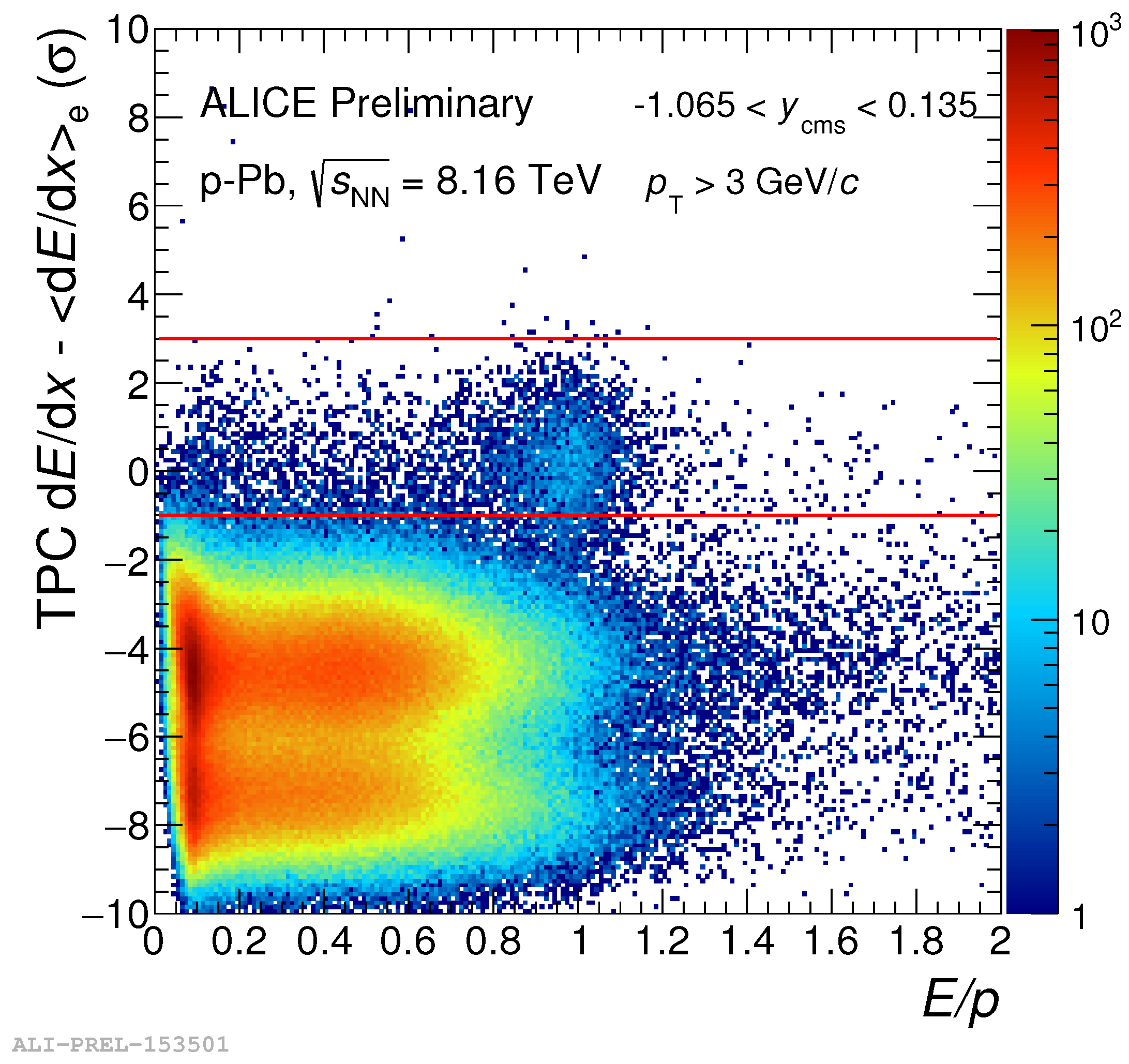
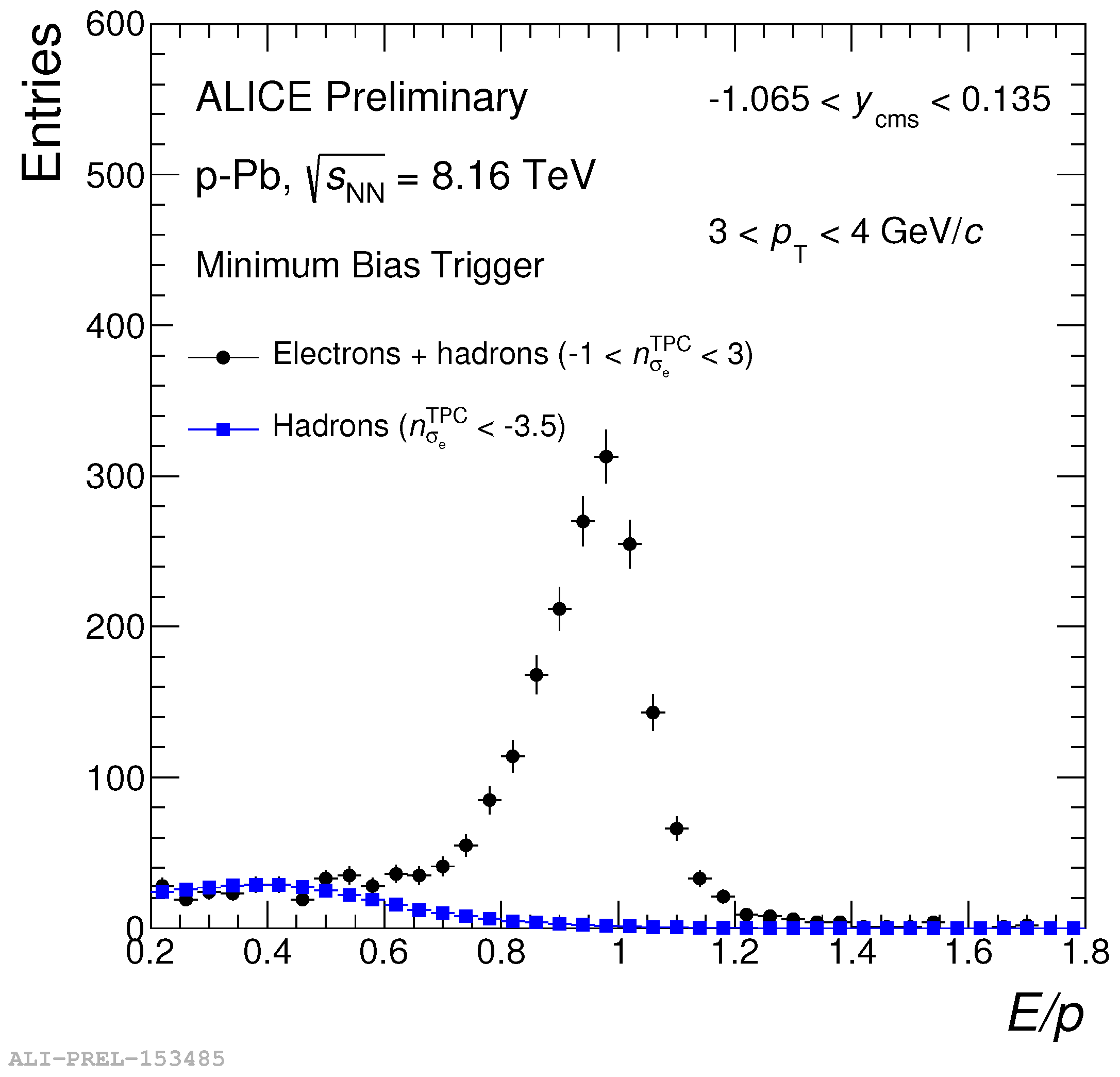
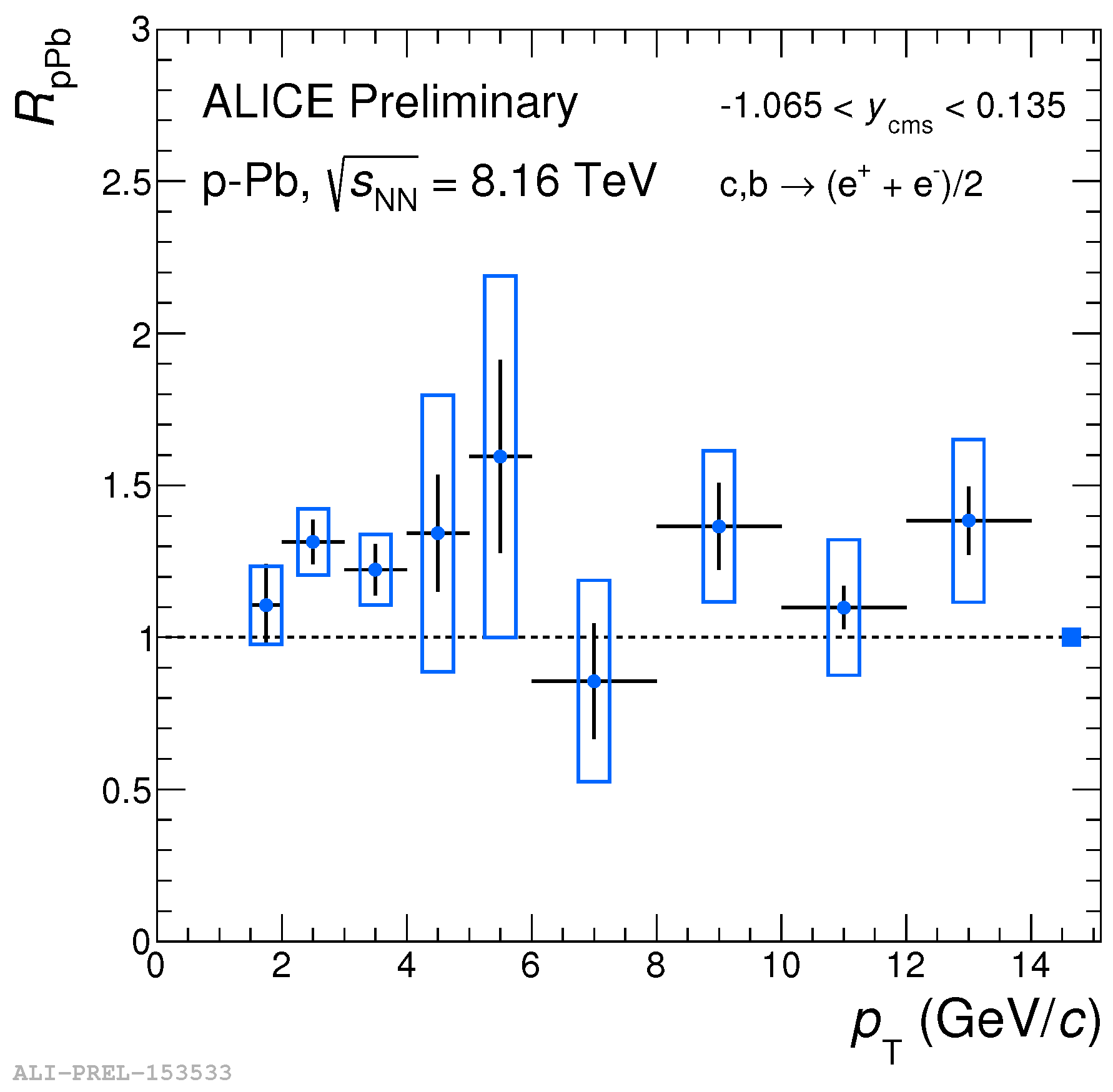
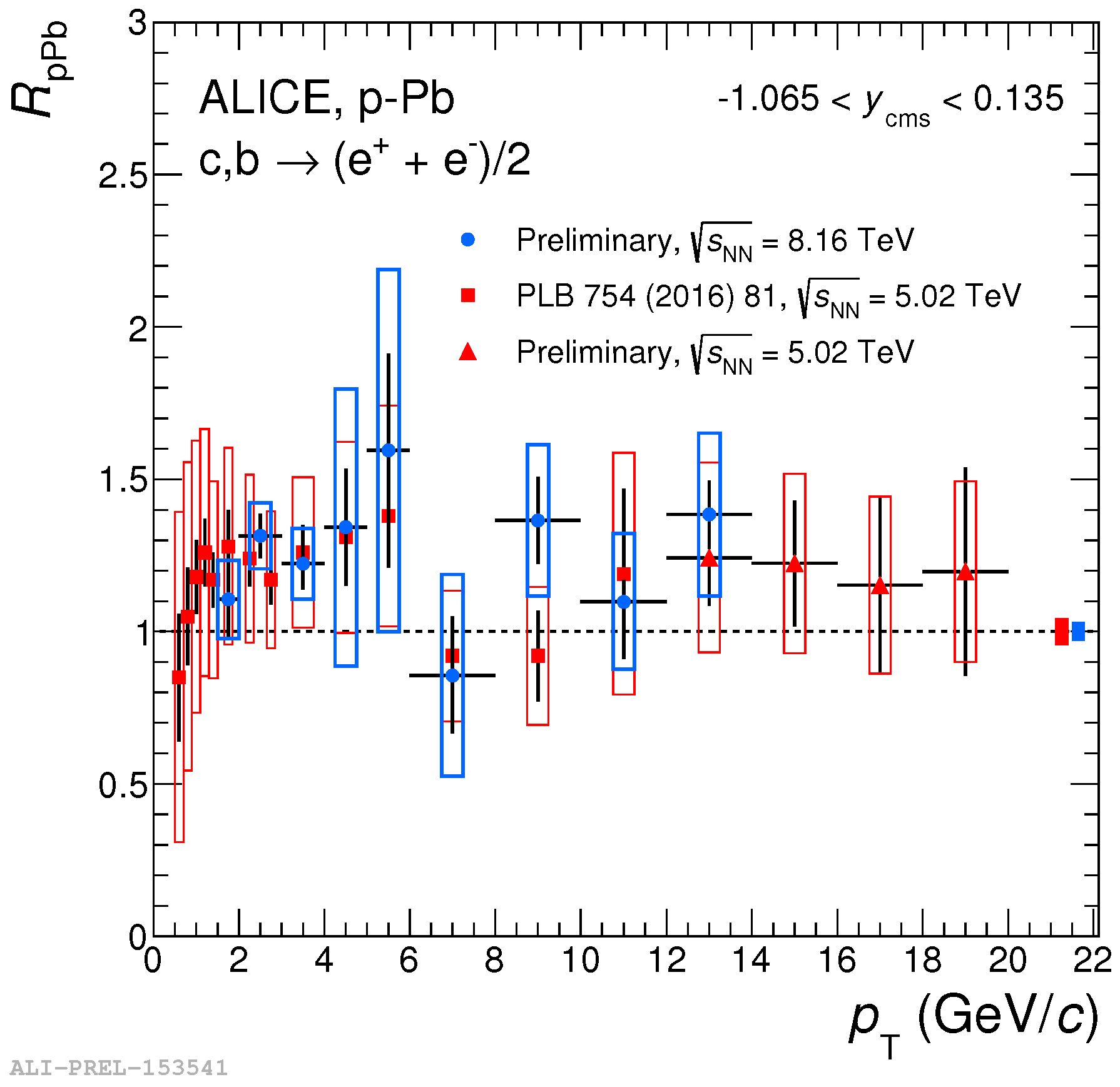
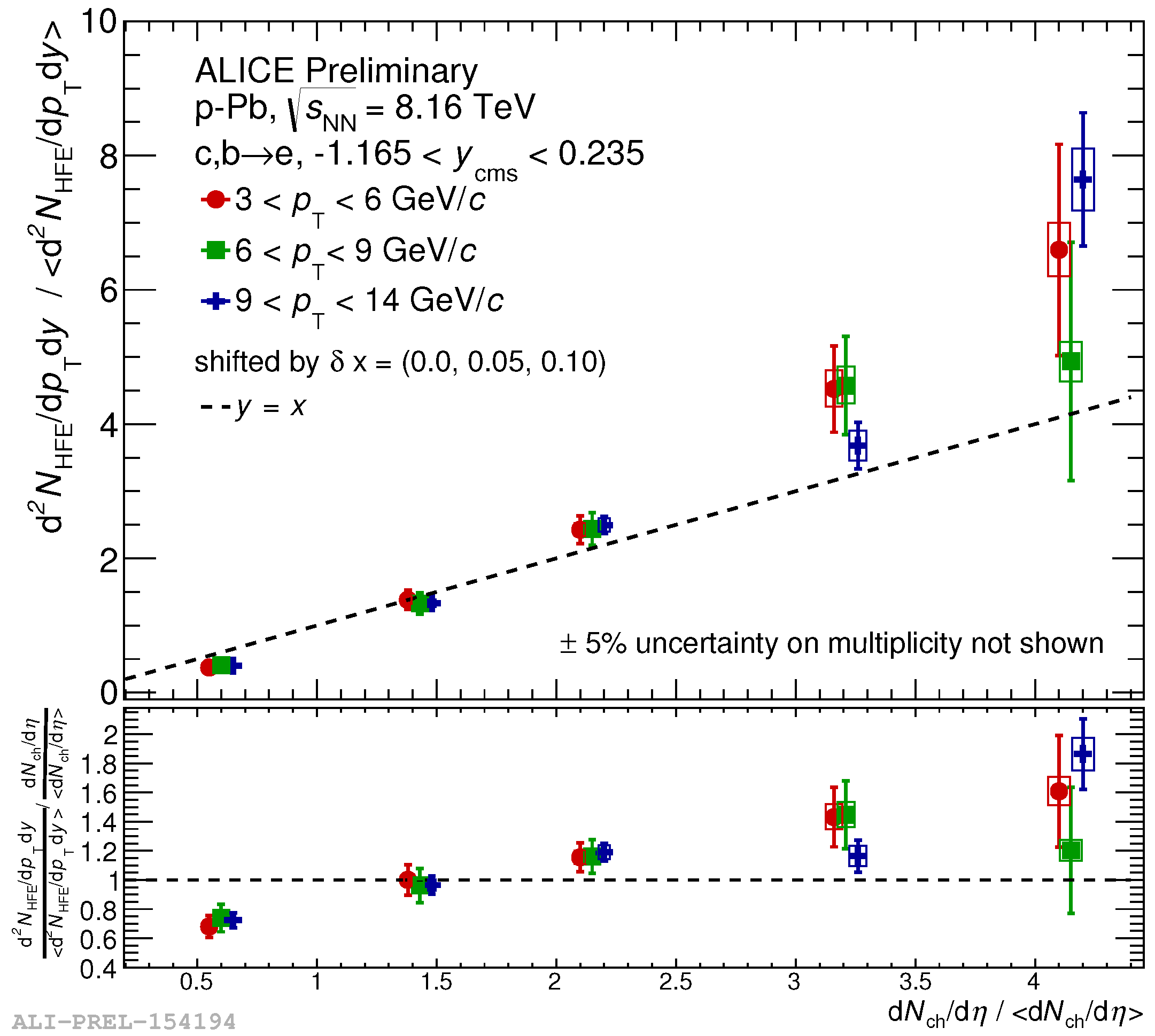
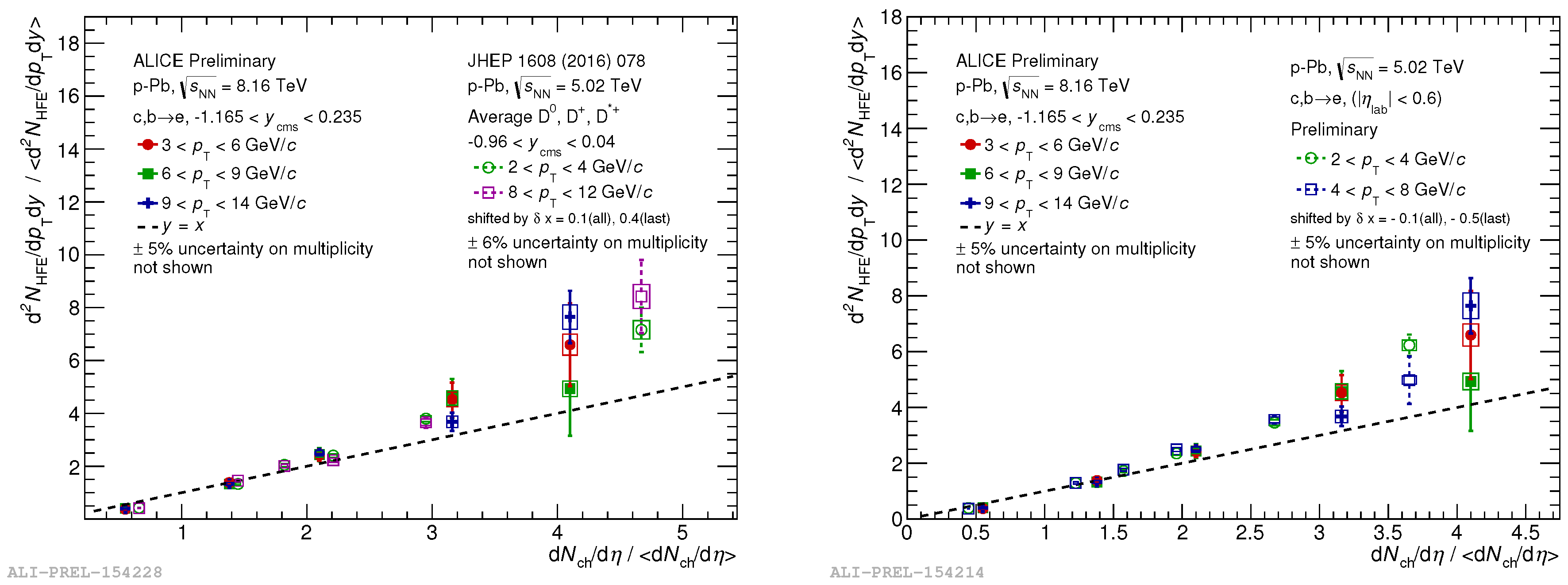
Publisher’s Note: MDPI stays neutral with regard to jurisdictional claims in published maps and institutional affiliations. |
© 2019 by the author. Licensee MDPI, Basel, Switzerland. This article is an open access article distributed under the terms and conditions of the Creative Commons Attribution (CC BY) license (https://creativecommons.org/licenses/by/4.0/).
Share and Cite
Dhankher, P., , on behalf of ALICE collaboration. Multiplicity Dependence of Heavy-Flavour Hadron Decay Electron Production in Collisions at √sNN = 8.16 Measured with ALICE at the LHC. Proceedings 2019, 10, 28. https://doi.org/10.3390/proceedings2019010028
Dhankher P , on behalf of ALICE collaboration. Multiplicity Dependence of Heavy-Flavour Hadron Decay Electron Production in Collisions at √sNN = 8.16 Measured with ALICE at the LHC. Proceedings. 2019; 10(1):28. https://doi.org/10.3390/proceedings2019010028
Chicago/Turabian StyleDhankher, Preeti , on behalf of ALICE collaboration. 2019. "Multiplicity Dependence of Heavy-Flavour Hadron Decay Electron Production in Collisions at √sNN = 8.16 Measured with ALICE at the LHC" Proceedings 10, no. 1: 28. https://doi.org/10.3390/proceedings2019010028
APA StyleDhankher, P., , on behalf of ALICE collaboration. (2019). Multiplicity Dependence of Heavy-Flavour Hadron Decay Electron Production in Collisions at √sNN = 8.16 Measured with ALICE at the LHC. Proceedings, 10(1), 28. https://doi.org/10.3390/proceedings2019010028



